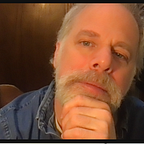People have different affinities to and aversions to violence. That, coupled with the fact that people don’t agree on the definition of violence means that moment to moment it is hard to know where and in what form violence will emerge and what the people around you will think about it.
It is possible to think of violence and nonviolence as a big and rich spectrum of behavior, thoughts and conditions. On one end is hyper-violence whose most visible artifacts are war, the stripping away of personal autonomy through sexual violence, incarceration and coerced religion, as well as all forms of social inequity, vitriolic language, exclusion, environmental destruction … the list goes on. On the other side of the spectrum sits Gandhi: empathy, service to others, social justice, philosophies of non-harming … the list also being only confined by our creative capacity.
In between those endpoints lie … nearly all of human experience. None of us are truly consistent. A genocidal fascist leader may be a good parent; a nonviolent peace activist may hold a grudge against a family member. Those of us who believe in a more peaceful and just world try to work our way toward the Gandhi side of things, knowing we may never reach that end.
I think of the violent end of the spectrum as the amygdala side, the amygdala being the primitive fight or flight center of the human brain. When your amygdala is hyperactive, you can never rest, danger lurks everywhere and peace is impossible. People at or near this state feel trapped. They believe that others are out to get them and they can’t let their guard down. They are in perpetual survival mode, perhaps addicted to rushes of adrenalin sparked by anger. That is not a world I want to live in, and I don’t think it’s sustainable for our species, as wells the millions of other species we are taking down with us.
If your goal is to live a more peaceful, enjoyable life, you may want to think about incremental ways to make it so. Every time you are confronted with a decision about a potential behavior, you can ask yourself, where is this behavior on the violence-nonviolence spectrum relative to me? Is it a bit more violent than I currently reside on the spectrum or a bit less?
You already know what to do about potential behavior that is far from you on the spectrum. In all likelihood, you don’t need to think about whether to murder someone you disagree with or whether to allow a mosquito to drink your blood without swatting it. This method is useful for contemplating actions that are close to your current position: Will it take me forward or backward on my journey along the spectrum?
An example from my life is the decision I made last night about whether to continue to consume dairy. I’ve been a vegetarian for decades, eschewing meat but eating dairy products, so veganism was close to me on the spectrum. After finally taking a look at the cruelty of the dairy industry, it was obvious that to move toward a less violent future I should stop supporting that industry.
The decision to eat or not eat cheese may be far from your current position on the spectrum. If so, it may be irrelevant to you. Perhaps you need to decide whether or not to join a paramilitary group, engage in violent gang initiations, beat your spouse … or volunteer at a food bank. I give you the dairy example because it was relevant to me; we are all in different places on our journeys. What lies right next to you may be sending an apology message to a family member.
To accept the spectrum model of violence and nonviolence is to reject the either/or model of good and bad. Things are relatively more or less violent and destructive. People are not good or evil. A circle doesn’t have a left and a right side. When we move toward the light, we are not destroying the darkness, but bit by bit we are letting it go.
Please consider supporting my work by clapping, commenting and following my blog. Thank you.
